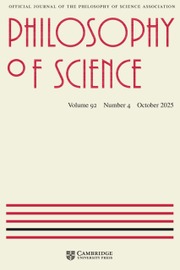No CrossRef data available.
Article contents
Why Functional Form Matters: Revealing the Structure in Structural Models in Econometrics
Published online by Cambridge University Press: 01 January 2022
Abstract
This paper argues that econometricians’ explicit adoption of identification conditions in structural equation modelling commits them to read the functional form of their equations in a strong, nonmathematical way. This content, which is implicitly attributed to the functional form of structural equations, is part of what makes equation structural. Unfortunately, econometricians are not explicit about the role functional form plays in signifying structural content. In order to remedy this, the second part of this paper presents an interpretation of the functional form based on Herbert Simon's definition of causal order. This begins to set out just what the functional form of structural equations represents.
Information
- Type
- Philosophy of Probability and Statistics
- Information
- Copyright
- Copyright © The Philosophy of Science Association
Footnotes
I would like to thank Nancy Cartwright and attendants at UCSD Graduate Seminar 2006 for helpful comments. I also want to thank the AHRC for supporting the research for this paper.

